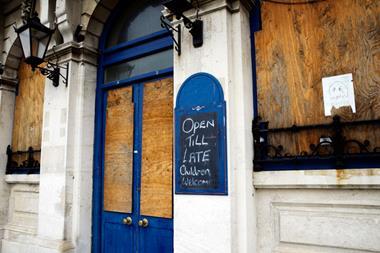The European private label market is set to grow a staggering 44% to E430.8bn over the next four years, according to the latest report into the market by IGD.
Countries such as France, Germany and the UK are expected to retain the lion's share, but they will be less dominant overall as retailers and suppliers target growth in central and eastern Europe. Despite a penetration of only 4% Russia is set to become the 11th largest market by 2010.
Jonathan Gunz, IGD senior international business analyst, says: "It's all about the growth story. We see the market growing rapidly. That creates opportunities."
Some of the biggest opportunities will be in the health and lifestyle, premium and speciality food arenas, he predicts. But there is also likely to be growth in non-food and financial services. Total private label penetration is expected to increase 5.7% to 26.8%.
Growth has been fuelled by the increasing focus by the UK multiples on own label and the rise of hard discounters in Europe, says Gunz.
Although retailers are arguably driving growth, they are only responding to consumer demand, he adds: "Some trends reflect what's going on in the wider grocery market - for example, the increasing focus on premium."
While less developed markets are likely to adopt a three-tier pricing strategy along 'good, better, best' lines, more developed markets are already evolving.
"We're seeing greater diversification into sub-categories," says Gunz, citing the example of George at Asda and Tesco Finest, both of which have diversified into categories beyond clothing and food.
There is also scope for more exclusive brands, he believes, highlighting Boots No.7 cosmetics, which are sold through retailers in Finland, Norway and Switzerland. Central and eastern Europe will become more important both to private label manufacturers and to retailers and branded manufacturers looking for strategic exposure to private label, he predicts.
Brian Sharoff, president of the Private Label Manufacturers Association, says: "One of the most interesting conversations we've had is with Tesco, which feels that mainstream and premium private label are much better strategically than budget for central and eastern Europe. As eastern Europeans become better off, they want to indulge themselves in the same way as western Europeans. You have to decide to whom you want to appeal: the growing affluent population or blue collar workers?"
Manufacturers and retailers will need to tread carefully, warns Gunz: "If you produce branded and private label, you need to make sure there's a clear difference."
Sharoff adds that even in less developed markets, the obvious strategies may not work: "It's not clear that you can support a three-tier pricing strategy in some of these markets. You can't simply transfer what works elsewhere. It's an important decision to make.
"Not only do you have to divine what consumers need, but also what the competition is likely to do. As far as suppliers go, it's the old story of whether your supply lines are stretched too far."
In short, there are plenty of opportunities but no easy wins. Make sure you do your homework, advises Sharoff: "If you want to sit around the poker table, you'd better understand the stakes." n
Countries such as France, Germany and the UK are expected to retain the lion's share, but they will be less dominant overall as retailers and suppliers target growth in central and eastern Europe. Despite a penetration of only 4% Russia is set to become the 11th largest market by 2010.
Jonathan Gunz, IGD senior international business analyst, says: "It's all about the growth story. We see the market growing rapidly. That creates opportunities."
Some of the biggest opportunities will be in the health and lifestyle, premium and speciality food arenas, he predicts. But there is also likely to be growth in non-food and financial services. Total private label penetration is expected to increase 5.7% to 26.8%.
Growth has been fuelled by the increasing focus by the UK multiples on own label and the rise of hard discounters in Europe, says Gunz.
Although retailers are arguably driving growth, they are only responding to consumer demand, he adds: "Some trends reflect what's going on in the wider grocery market - for example, the increasing focus on premium."
While less developed markets are likely to adopt a three-tier pricing strategy along 'good, better, best' lines, more developed markets are already evolving.
"We're seeing greater diversification into sub-categories," says Gunz, citing the example of George at Asda and Tesco Finest, both of which have diversified into categories beyond clothing and food.
There is also scope for more exclusive brands, he believes, highlighting Boots No.7 cosmetics, which are sold through retailers in Finland, Norway and Switzerland. Central and eastern Europe will become more important both to private label manufacturers and to retailers and branded manufacturers looking for strategic exposure to private label, he predicts.
Brian Sharoff, president of the Private Label Manufacturers Association, says: "One of the most interesting conversations we've had is with Tesco, which feels that mainstream and premium private label are much better strategically than budget for central and eastern Europe. As eastern Europeans become better off, they want to indulge themselves in the same way as western Europeans. You have to decide to whom you want to appeal: the growing affluent population or blue collar workers?"
Manufacturers and retailers will need to tread carefully, warns Gunz: "If you produce branded and private label, you need to make sure there's a clear difference."
Sharoff adds that even in less developed markets, the obvious strategies may not work: "It's not clear that you can support a three-tier pricing strategy in some of these markets. You can't simply transfer what works elsewhere. It's an important decision to make.
"Not only do you have to divine what consumers need, but also what the competition is likely to do. As far as suppliers go, it's the old story of whether your supply lines are stretched too far."
In short, there are plenty of opportunities but no easy wins. Make sure you do your homework, advises Sharoff: "If you want to sit around the poker table, you'd better understand the stakes." n














No comments yet